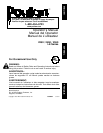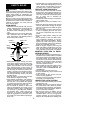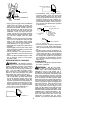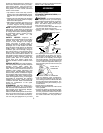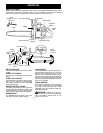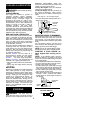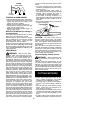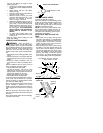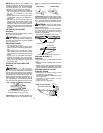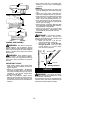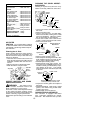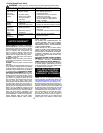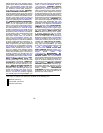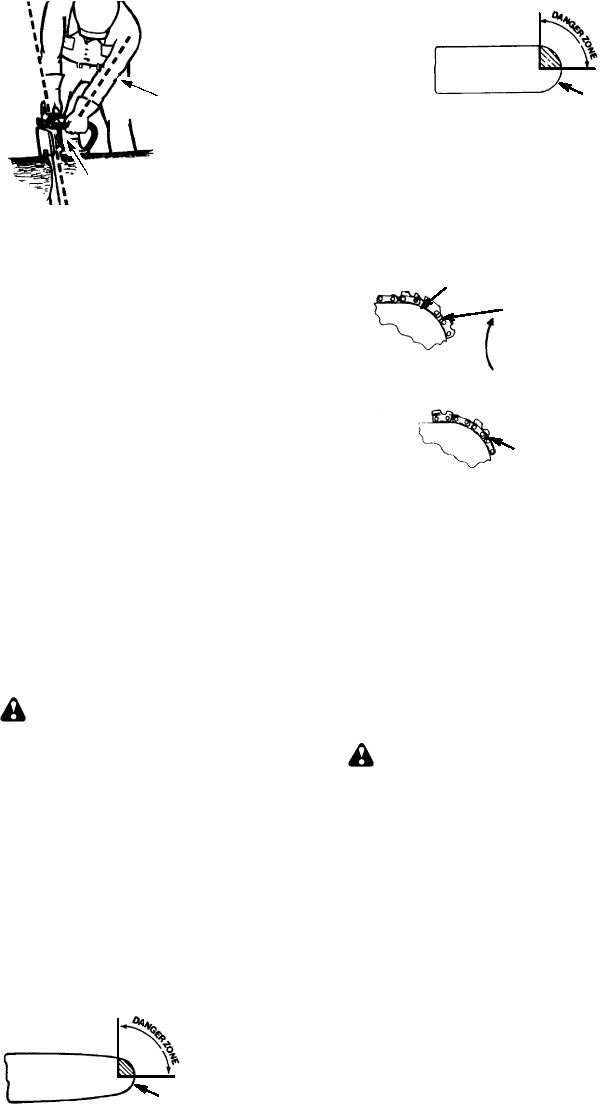
4
Thumb on underside of
handlebar
Elbow locked
S
Keep agood, firmgrip onthesawwithboth
hands when the engine is running and
don’t let go. Afirm grip willhelp youreduce
kickback and maintain control of the saw.
Keep the fingers of your left hand encir-
cling and your left thumb under the front
handlebar. Keep your right hand com-
pletely around the rear handle whether
your areright handed or left handed. Keep
your left arm straight with the elbow
locked.
S
Position your left hand onthe front handle-
bar so it is in a straight line with your right
hand on the rear handle when making
bucking cuts. Never reverse right and left
hand positions for any type of cutting.
S
Stand withyourweight evenly balanced on
both feet.
S
Stand slightly to the left side of the saw to
keep your body from being in a direct line
with the cutting chain.
S
Do not overreach. You could be drawn or
thrown off balance and lose control of the
saw.
S
Donot cut above shoulder height. Itisdiffi-
cult to maintain control of saw above
shoulder height.
KICKBACK SAFETY FEATURES
WARNING:
The following features
are included on your saw to help reduce the
hazard of kickback; however, such features
will not totally eliminate this danger. As a
chain saw user,do notrely onlyon safety de-
vices. You must follow all safety precau-
tions, i nstructions, and maintenance in this
manual to help avoid kickback and other
forces which can result in serious injury.
S
Reduced--Kickback Guide Bar, designed
with a small radius tip which reduces the
size of the kickback danger zone on the
bar tip. A Reduced--Kickback Guide Bar
has been demonstrated to significantly re-
duce the number and seriousness of kick-
backs when tested in accordance with
safety requirements for gasoline powered
chain saws as set by ANSI B175.1.
Small Radius Tip
Reduced Kickback Symmetrical Guide Bar
Symmetrical Guide Bar
Large R adius Tip
S
Low--Kickback Chain, designed with a
contoured depth gauge and guard link
which deflect kickback force and allow
wood togradually ride into thecutter.Low--
Kickback Chain has met kickback per-
formance requirements when tested on a
representative sample of chain saws be-
low 3.8 cubic inch displacement specified
in ANSI B175.1.
Low---Kickback
Chain
Not aLow---Kickback Chain
CanObstruct Material
Contoured Depth Gauge
Elongated Guard Link
Deflects
Kickback Force
And Allows Wood
ToGradually
Ride Into Cutter
S
Front Hand Guard, designed to reduce the
chance of your left hand contacting the
chain if yourhand slips offthe front handl e-
bar.
S
Position of front and rear handlebars, de-
signed with distance between handles and
“in-line” with each other. The spread and
“in-line” position of the hands provided by
this design work together to give balance
and resist ance in controlling the pivot of
the saw back toward the operator if kick-
back occurs.
CHAIN BRAKE
S
Chain Brake, designed to stop the chain in
the event of kickback.
WARNING:
WE DO NOT REP-
RESENT AND YOU SHOULD NOT AS-
SUME THAT THE CHAIN BRAKE WILL
PROTECT YOU IN THE EVENT OF A
KICKBACK. Kickback is a lightning fast ac-
tion which throws the bar and rotating chain
back and up toward the operator. Kickback
can be caused byallowing contact of thebar
tip in the danger zone with any hard object.
Kickback canalsobecaused bypinching the
sawchain alongthetop ofthe guide bar. This
action may push the guide bar rapidly back
toward the operator. Either of these events
may cause you to lose control of the saw
which could result in serious injury or even
death. DO NOTREL YUPON ANY OFTHE
DEVICES BUILT INTO YOUR SAW. YOU
SHOULDUSE THE SAWPROPERLYAND
CAREFULLY TO AVOID KICKBACK. Re-
duced--kickback guide bars and low--kick-
back saw chains reduce the chance and
magnitude of kickback and are recom-
mended. Your sawhas alow kickback chain



